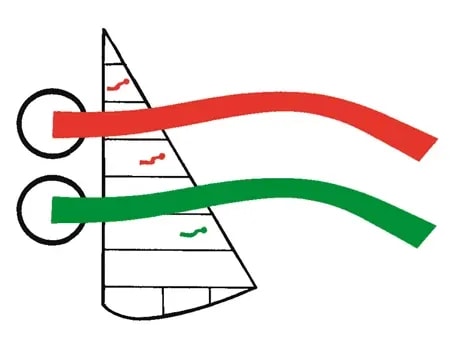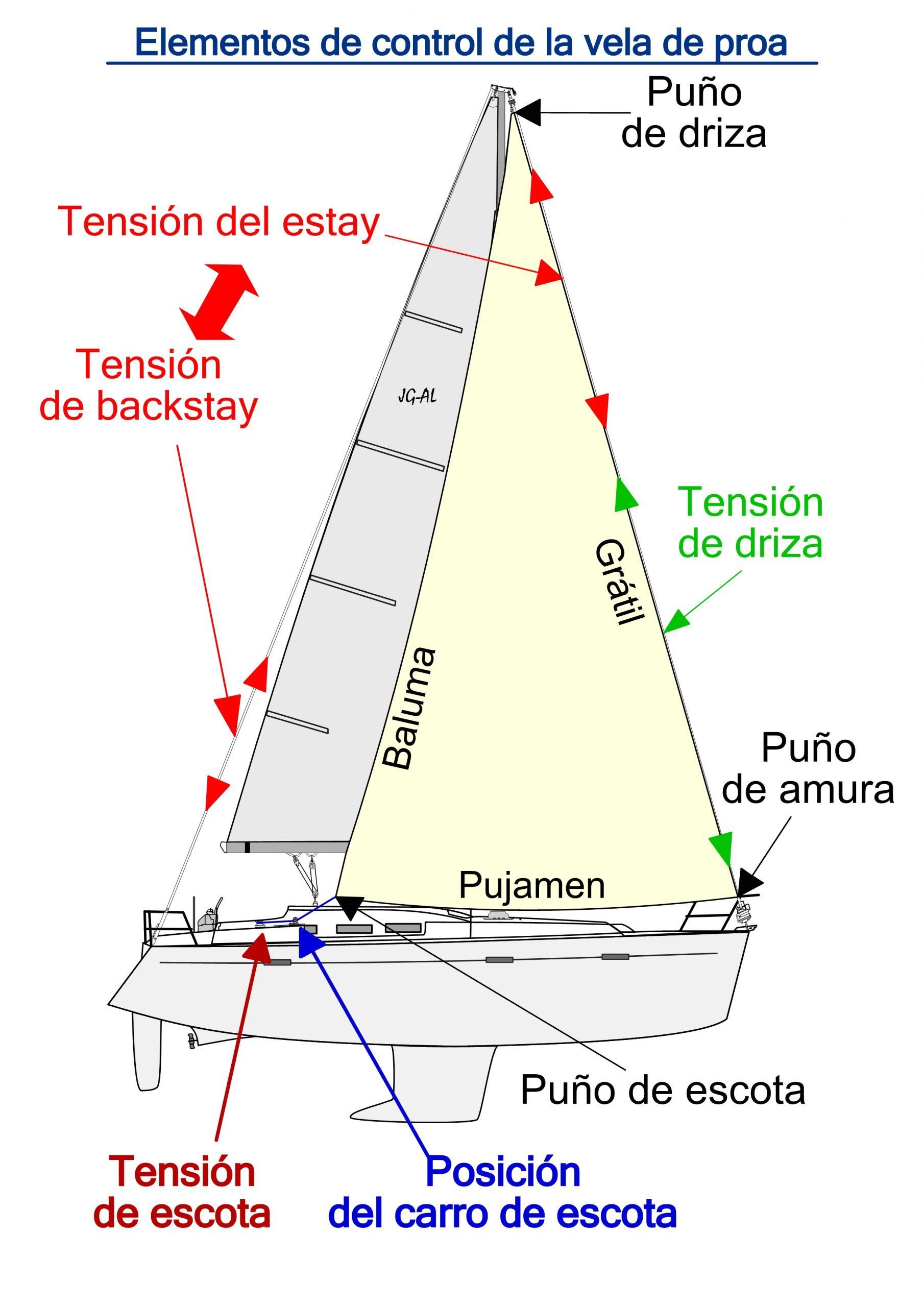Sailing is much more than gliding over the sea powered by the wind. It’s a precise dance between the sailboat, the sea, and the sky. And at the heart of this harmony lies an essential skill: sail trimming.
If you're taking your first steps to learn how to sail, this guide will be your indispensable companion.
Whether you dream of navigating your own boat or you're thinking about renting a sailboat in Alicante to practice, mastering the art of sail adjustment will make the difference between a dull crossing and an unforgettable experience.
“Good trimming is not about luck, but sensitivity. It's when you understand that wind isn’t controlled — it’s interpreted.”
What Is Sail Trimming and Why Is It So Important?
Trimming means adjusting the shape, tension, and orientation of the sails to efficiently harness the wind's power. A well-trimmed sailboat:
- Moves faster without relying on the engine.
- Heels less and is more comfortable for the crew.
- Reduces gear wear and material fatigue.
- And most importantly: responds better to the helm and sails more elegantly.
This knowledge isn’t just for racers — even when renting a sailboat for a day, you’ll notice the difference good trimming makes.
Understanding Wind and Sail Dynamics
Before diving into technique, it's essential to understand the language of the sailboat.
A sail doesn’t work like a kite: instead of being dragged by the wind, it channels it like an airplane wing.
By properly orienting the sail, a pressure difference is created between its two faces. That force pushes the boat forward.
The challenge is that the apparent wind (what we feel onboard) changes depending on course and boat speed. That’s why trimming is dynamic: what works on a beam reach at 10 knots won’t work when close-hauled at 15.
Key Adjustments for Effective Trimming
Mainsail Trimming
The mainsail has the most influence on the boat’s balance. Several controls are involved in its adjustment:
- Mainsheet: controls the sail’s opening angle relative to the boat.
- Traveler: modifies the lateral pulling point.
- Outhaul (Pajarín): adjusts the depth (belly) of the foot.
- Cunningham and halyard: control vertical tension along the luff.
💡 Practical tip: with light wind off the coast of Alicante, loosen the outhaul and Cunningham to increase belly. You’ll capture more wind and improve speed even in gentle conditions.

Genoa or Jib Trimming
Though sometimes overlooked, a well-trimmed genoa is essential for upwind and reaching performance.
- Sheet lead (car): move forward for power, back for a flatter sail.
- Sheet tension: tighten or ease to prevent luffing or over-trimming.
- Tell-tales: if the upper ones drop, the sail needs more opening; if the lower ones flutter, it’s too tight.

📍 Tip: in open areas like Playa de San Juan, it’s great to experiment with genoa trim when transitioning from a beam to broad reach.

Trimming Based on Point of Sail
Each course requires different trim. Not adjusting is like driving everywhere in third gear.
| Point of Sail | Mainsail | Genoa/Jib |
|---|---|---|
| Close-hauled | Tight and flat | Tight angle |
| Beam reach | Moderate opening | Intermediate angle |
| Broad reach | More belly, eased sheet | Lead moved aft |
| Downwind | Fully open (with preventer) | Furled or poled-out if needed |
“Sailing close-hauled off Tabarca with perfect trim is pure bliss. Even with a rental boat, you’ll feel like you’re flying.”
Common Trimming Mistakes (and How to Avoid Them)
- Ignoring the tell-tales — they’re your eyes on the sail.
- Relying only on the sheet — traveler, outhaul, and Cunningham matter too.
- Not adjusting after tacking — every tack needs tweaks.
- Chasing speed without balance — leads to excessive heeling and poor control.
Avoiding these errors is easy with a bit of practice. If you rent a boat with a skipper, take the chance to observe and ask. The sea is the best teacher.
Where to Practice if You’re Starting Out
You don’t need your own boat. If you're looking to learn how to sail, you can:
- Take a class with an instructor (many schools offer 1-2 day courses).
- Rent a sailboat in Alicante, where conditions are ideal for beginners.
- Join a group voyage, where you’ll both sail and learn.
“Sailing the Costa Blanca is like learning to drive on a scenic road with no traffic: perfect to enjoy and improve.”
Conclusion: From Trimming to Freedom
Mastering sail trimming is not just about technique. It’s a way to connect with the sea. To transform sailing into an intuitive, responsive, and elegant experience.
And you don’t need years of experience to begin. In fact, the best time to start is now. Whether you’re taking a course or planning to rent a sailboat on your own, this knowledge will make all the difference.
🌊 Ready to put it into practice? In Alicante, the sea awaits you.



